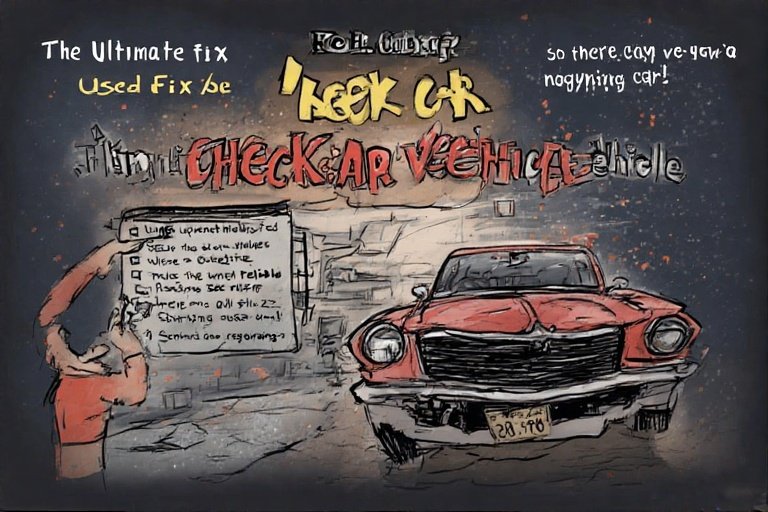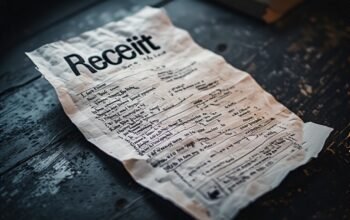
Purchasing a used car can be an exciting yet daunting task. With countless options and potential pitfalls, ensuring you get a reliable vehicle requires careful inspection and preparation. The Cris Fix used car checklist is a trusted resource for car buyers, offering a step-by-step approach to evaluating a used vehicle’s condition. Inspired by automotive expert ChrisFix, this comprehensive guide will help you navigate the process with confidence, ensuring you drive away in a car that’s safe, reliable, and worth your investment. In this article, we’ll explore the Cris Fix used car checklist in detail, covering everything from exterior checks to test drives, and provide practical tips to make your purchase a success.
- Why the Cris Fix Used Car Checklist Matters
- Preparing for Your Used Car Inspection
- Exterior Inspection: First Impressions Matter
- Under the Hood: Checking the Engine Bay
- Interior Inspection: Comfort and Functionality
- Test Drive: Evaluating Performance
- Documentation and History: Verifying the Car’s Past
- Negotiating and Finalizing the Purchase
- Conclusion
- FAQs
Why the Cris Fix Used Car Checklist Matters
The Cris Fix used car checklist is designed to empower buyers by providing a systematic way to inspect a used car. Created by ChrisFix, a popular automotive YouTuber known for his detailed tutorials, this checklist helps you avoid common mistakes and identify potential issues before committing to a purchase. Whether you’re a first-time buyer or a seasoned car enthusiast, the Cris Fix used car checklist ensures you cover all critical aspects of a vehicle, from its mechanical health to its cosmetic condition. By following this guide, you can save thousands of dollars in repairs and avoid buying a lemon.
Preparing for Your Used Car Inspection
Before diving into the Cris Fix used car checklist, preparation is key. Start by researching the car model you’re interested in. Check its reliability ratings, common issues, and market value using resources like Kelley Blue Book or Edmunds. Gather essential tools for the inspection, such as a flashlight, gloves, a tire pressure gauge, and a code reader for checking diagnostic trouble codes (DTCs). Having these tools ready will make the Cris Fix used car checklist process smoother and more effective.
Next, arrange to inspect the car in daylight and in a dry environment to spot issues like rust or leaks more easily. Bring a friend or a trusted mechanic if possible, as a second pair of eyes can catch things you might miss. With these preparations in place, you’re ready to apply the Cris Fix used car checklist and evaluate the vehicle thoroughly.
Exterior Inspection: First Impressions Matter
The exterior inspection is the first step in the Cris Fix used car checklist. Begin by examining the car’s body for signs of damage, rust, or mismatched paint, which could indicate previous accidents or poor maintenance. Walk around the vehicle, checking for dents, scratches, or uneven panel gaps. The Cris Fix used car checklist emphasizes looking under the car for rust on the frame or exhaust system, as this can signal long-term durability issues.
Check the condition of the tires, as they’re a significant expense if replacements are needed. The Cris Fix used car checklist recommends looking for even tread wear and checking the tire manufacturing date (found on the sidewall) to ensure they aren’t too old. Inspect the windows and lights for cracks or fogging, and verify that all exterior lights (headlights, taillights, and turn signals) function properly. These checks, outlined in the Cris Fix used car checklist, help you assess the car’s overall condition and maintenance history.
Under the Hood: Checking the Engine Bay
The engine bay is the heart of the vehicle, and the Cris Fix used car checklist provides detailed guidance for inspecting it. Pop the hood and look for signs of leaks, corrosion, or worn components. Check the oil level and condition using the dipstick; dark, gritty oil may indicate poor maintenance. The Cris Fix used car checklist also advises inspecting the coolant, brake fluid, and transmission fluid for proper levels and clarity.
Examine the battery for corrosion on the terminals and check its age, as batteries typically last 3-5 years. Look at the belts and hoses for cracks or wear, as these are critical for engine performance. The Cris Fix used car checklist also recommends using a code reader to scan for diagnostic trouble codes, which can reveal hidden issues like misfires or sensor failures. A clean, well-maintained engine bay is a good sign that the car has been cared for.
Interior Inspection: Comfort and Functionality
The interior is where you’ll spend most of your time, so the Cris Fix used car checklist includes a thorough check of this area. Sit in the driver’s seat and test all controls, including the air conditioning, heater, radio, and power windows. The Cris Fix used car checklist stresses checking for warning lights on the dashboard, such as the check engine light, which could indicate serious issues.
Inspect the seats, upholstery, and carpets for tears, stains, or unusual odors, which might suggest water damage or neglect. Test the seat belts for smooth operation and check the condition of the headliner and dashboard. The Cris Fix used car checklist also recommends verifying that all gauges (speedometer, fuel gauge, etc.) work correctly. A well-maintained interior often reflects the overall care the car has received.
Test Drive: Evaluating Performance
The test drive is a critical part of the Cris Fix used car checklist, as it reveals how the car performs on the road. Before starting, check that the car starts smoothly without excessive cranking or strange noises. During the drive, pay attention to the engine’s responsiveness, transmission shifts, and braking performance. The Cris Fix used car checklist advises testing the car on different road types—city streets, highways, and rough roads—to assess its handling and suspension.
Listen for unusual noises, such as rattles, squeaks, or grinding sounds, which could indicate mechanical issues. The Cris Fix used car checklist also suggests testing the steering for smoothness and alignment. If possible, accelerate to highway speeds and brake firmly (in a safe area) to ensure the car responds well. A test drive following the Cris Fix used car checklist can uncover problems that aren’t visible during a static inspection.
Documentation and History: Verifying the Car’s Past
Paperwork is just as important as the physical inspection in the Cris Fix used car checklist. Request the vehicle’s title, maintenance records, and a vehicle history report from services like Carfax or AutoCheck. The Cris Fix used car checklist emphasizes checking for a clean title, as a salvage or rebuilt title could indicate past accidents or flood damage.
Review maintenance records to confirm regular oil changes, tire rotations, and other services. The Cris Fix used car checklist also advises checking for recalls on the car’s make and model, which can be done through the manufacturer’s website or the National Highway Traffic Safety Administration (NHTSA). A complete and transparent history is a strong indicator of a reliable used car.
Negotiating and Finalizing the Purchase
Once you’ve completed the Cris Fix used car checklist and are satisfied with the car’s condition, it’s time to negotiate. Use any issues found during the inspection—such as worn tires or minor repairs—to justify a lower price. The Cris Fix used car checklist helps you approach negotiations with confidence, as you’ll have a clear understanding of the car’s strengths and weaknesses.
Before finalizing the deal, have the car inspected by a trusted mechanic to confirm your findings. The Cris Fix used car checklist recommends this step to catch any issues you might have missed. Once you agree on a price, ensure all paperwork is in order, including the title transfer and bill of sale. Following the Cris Fix used car checklist ensures you make an informed decision and avoid costly surprises.
Conclusion
The Cris Fix used car checklist is an invaluable tool for anyone looking to buy a used car. By following its step-by-step process, you can thoroughly evaluate a vehicle’s condition, from its exterior and engine to its interior and performance. This checklist empowers you to make a smart, confident purchase, saving you time, money, and stress. Whether you’re buying from a dealership or a private seller, the Cris Fix used car checklist ensures you drive away in a reliable car that meets your needs. Take your time, use the checklist diligently, and enjoy the peace of mind that comes with a well-inspected vehicle.
FAQs
Q: What is the Cris Fix used car checklist?
A: The Cris Fix used car checklist is a comprehensive guide created by automotive expert ChrisFix to help buyers inspect used cars. It covers exterior, interior, engine, test drive, and documentation checks to ensure a vehicle is reliable and worth purchasing.
Q: Do I need special tools to use the Cris Fix used car checklist?
A: Basic tools like a flashlight, tire pressure gauge, and code reader are recommended for the Cris Fix used car checklist. These tools help you inspect critical components like the engine, tires, and electronics.
Q: How long does it take to complete the Cris Fix used car checklist?
A: Completing the Cris Fix used car checklist typically takes 1-2 hours, depending on your experience and the car’s condition. This includes the exterior, interior, engine, test drive, and paperwork checks.
Q: Can I use the Cris Fix used car checklist for any car make or model?
A: Yes, the Cris Fix used car checklist is designed to be universal and can be applied to any used car, regardless of make or model, to assess its condition and reliability.
Q: Should I hire a mechanic even if I use the Cris Fix used car checklist?
A: While the Cris Fix used car checklist is thorough, having a professional mechanic inspect the car is recommended to confirm your findings and catch any hidden issues.

